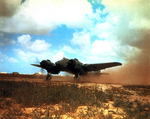Hello,
I wonder if the Beaufighter could have been an useful interceptor, in 1941-42, to provide fighter cover to British/allied Mediterranean convoys? Used roughly beyond of range of Axis' single engined fighters combat range, to pounce the Ju-87/88, SM.79 and likes?
In case someone has some good data that Beau was historically used in such role, please post that
I wonder if the Beaufighter could have been an useful interceptor, in 1941-42, to provide fighter cover to British/allied Mediterranean convoys? Used roughly beyond of range of Axis' single engined fighters combat range, to pounce the Ju-87/88, SM.79 and likes?
In case someone has some good data that Beau was historically used in such role, please post that

